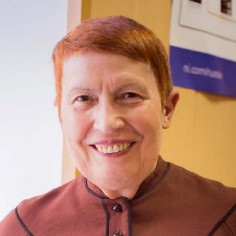The Friedmann Cosmology: A Century Later
A special issue of Universe (ISSN 2218-1997). This special issue belongs to the section "Cosmology".
Deadline for manuscript submissions: closed (31 January 2024) | Viewed by 24115

Special Issue Editors
2. Peter the Great Saint Petersburg Polytechnic University, 195251 Saint Petersburg, Russia
Interests: astrophysics; atomic physics; condensed matter physics
Special Issues, Collections and Topics in MDPI journals
2. Peter the Great Saint Petersburg Polytechnic University, 195251 Saint Petersburg, Russia
Interests: astrophysics; cosmology; quantum field theory
Special Issues, Collections and Topics in MDPI journals
Interests: gravitation; cosmology; wormholes; black holes; Horndeski gravity
Special Issues, Collections and Topics in MDPI journals
Special Issue Information
Dear Colleagues,
This Special Issue is devoted to the centenary of Alexander Friedmann’s prediction of the Universe expansion made by him in 1922 for the case of the closed Universe and in 1924 for the open Universe. This prediction, derived mathematically on the basis of Einstein’s general relativity theory, was soon confirmed experimentally and became the basis of the modern cosmology. In a broader context, we may say that Alexander Friedmann’s prediction of the Universe expansion radically changed our picture of the world in comparison with all previous epochs and marked the beginning of the new era in understanding of the World around us. The present Special Issue will contain both research and review articles devoted to all aspects of the expanding Universe, including the problem of its origin from the cosmological singularity, inflationary stage of the Universe evolution, the cosmological scenario of the hot Universe, modern stage of the Universe expansion, astrophysics of expanding Universe, acceleration of the Universe expansion, dark matter, and dark energy. Discussions of unresolved problems and planned experiments are welcome.
Prof. Dr. Galina L. Klimchitskaya
Prof. Dr. Vladimir M. Mostepanenko
Prof. Dr. Sergey V. Sushkov
Guest Editors
Manuscript Submission Information
Manuscripts should be submitted online at www.mdpi.com by registering and logging in to this website. Once you are registered, click here to go to the submission form. Manuscripts can be submitted until the deadline. All submissions that pass pre-check are peer-reviewed. Accepted papers will be published continuously in the journal (as soon as accepted) and will be listed together on the special issue website. Research articles, review articles as well as short communications are invited. For planned papers, a title and short abstract (about 100 words) can be sent to the Editorial Office for announcement on this website.
Submitted manuscripts should not have been published previously, nor be under consideration for publication elsewhere (except conference proceedings papers). All manuscripts are thoroughly refereed through a single-blind peer-review process. A guide for authors and other relevant information for submission of manuscripts is available on the Instructions for Authors page. Universe is an international peer-reviewed open access monthly journal published by MDPI.
Please visit the Instructions for Authors page before submitting a manuscript. Submitted papers should be well formatted and use good English. Authors may use MDPI's English editing service prior to publication or during author revisions.
Keywords
- Alexander Friedmann
- expanding universe
- cosmological singularity
- inflation
- hot universe
- astrophysics of expanding universe
- accelerated expansion
- dark matter
- dark energy







